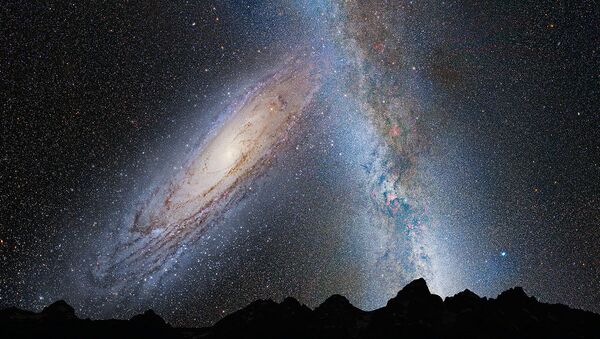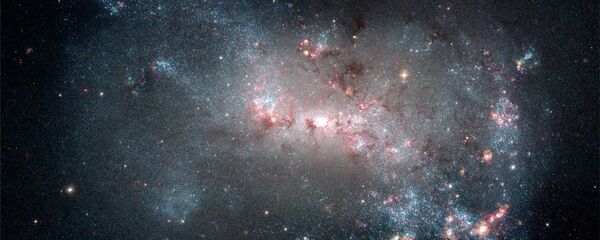Dark matter is an as-yet-unidentified substance that differs from regular matter in that it does not interact with any kind of radiation, including light. Scientists estimate that dark matter makes up about 27 percent of all matter in the universe, but the astronomical community debates endlessly about its nature, purpose, and composition.
As dark matter cannot be detected by traditional instrumentation, the only way to know if it is present is to measure phenomena that would be affected by its presence. One such phenomenon is gravitational lensing, in which gravity from massive celestial bodies, such as stars, bend the light of objects seen from Earth as being behind them. This effect remains true even if the bodies are composed of dark matter instead of regular matter. However, the distortion of light in distant galaxies is hard to notice and only the world’s most powerful telescopes are suited to the task.
The ESA launched KiDS with the intention of mapping gravitational lensing in 15 million galaxies close enough to Earth to be studied. They used the Very Large Telescope (VLT), whose website claims that it is the "world's most advanced optical instrument." By studying data gathered by the VLT, the ESA made a map of gravitational lensing seen from Earth and realized that the distribution of dark matter is much "smoother" than they expected.
If this observation can be applied to the entire universe, it would be a major shake-up in the field of cosmology. The current model states that dark matter was evenly distributed throughout space after the Big Bang, and has slowly clumped together into nodes and webs over time. This model, which has served as the basis for almost all recent research into how the universe has evolved, may now be in jeopardy.
Konrad Kujiken, principal investigator on the KiDS project, speculated that "maybe the role of dark energy in the expansion history of the universe is different from what is generally assumed." He wrote, "It may even be the case that gravity behaves differently at the largest cosmic scales."
Other scientists are more skeptical. Tony Tyson, a physicist with the University of California, Davis, told Sky and Telescope that the discrepancy is caused by the VLT only studying galaxies near Earth. "KiDS galaxies are much more nearby than those in deeper surveys," he said, adding, "so the lensing signal is correspondingly smaller, making systematic errors more prominent."
The Large Synoptic Survey Telescope (LSST), of which Tyson is Chief Scientist, will perform a similar study on a much larger scale when it is fully operational in 2022.



